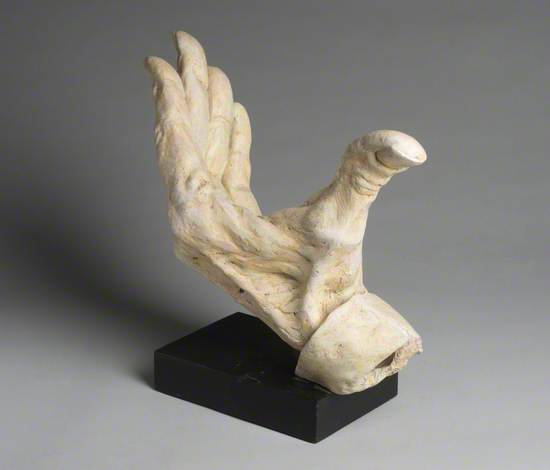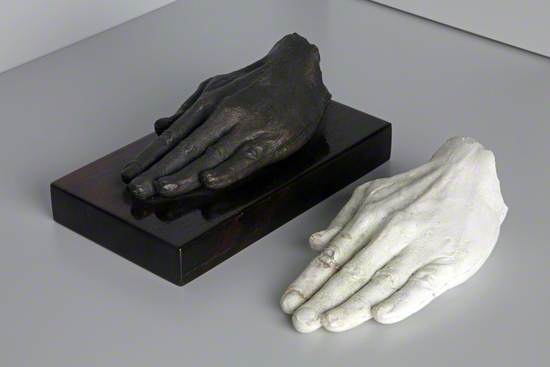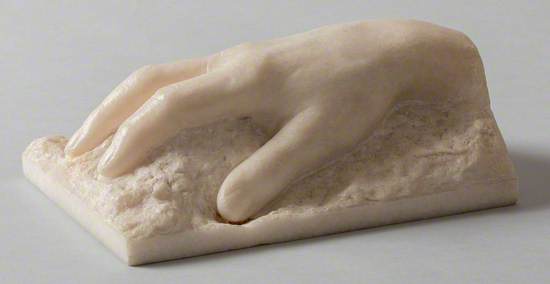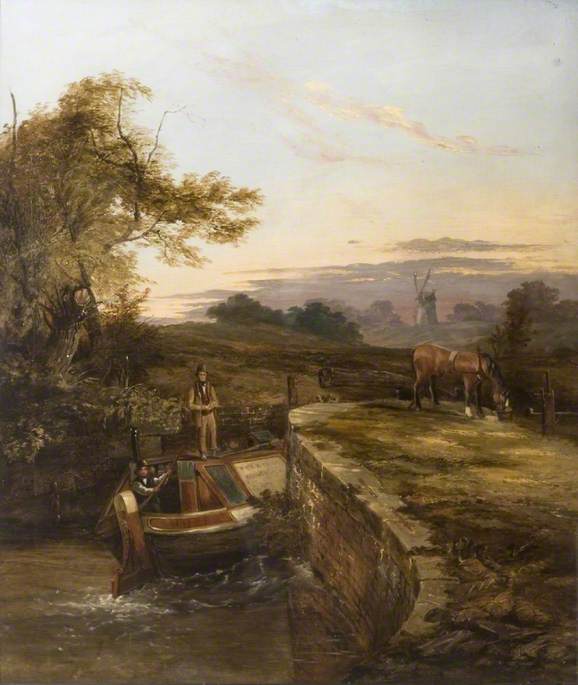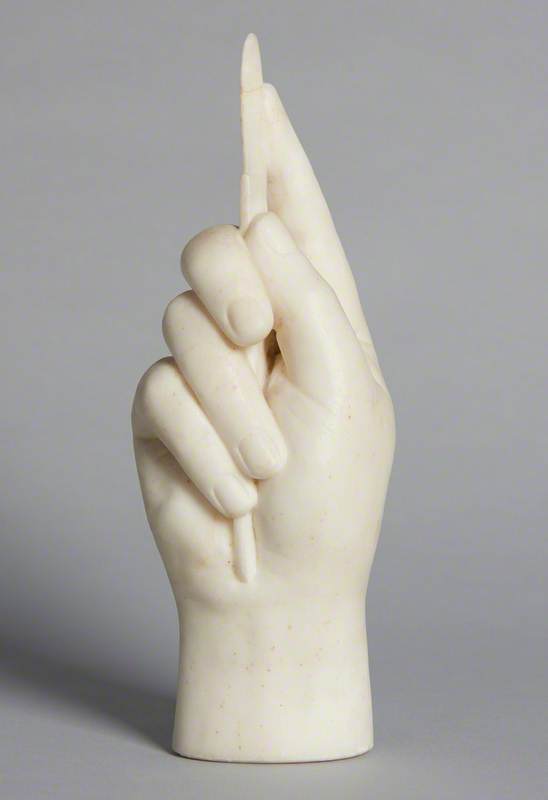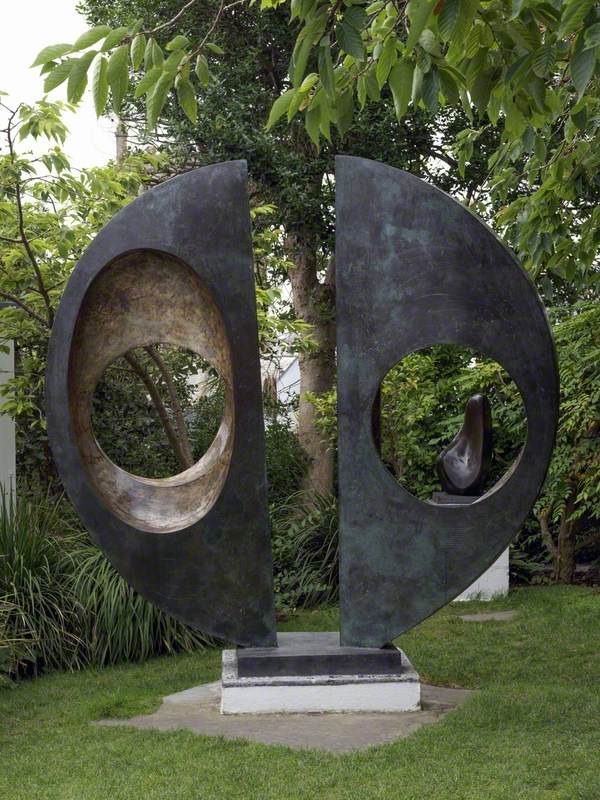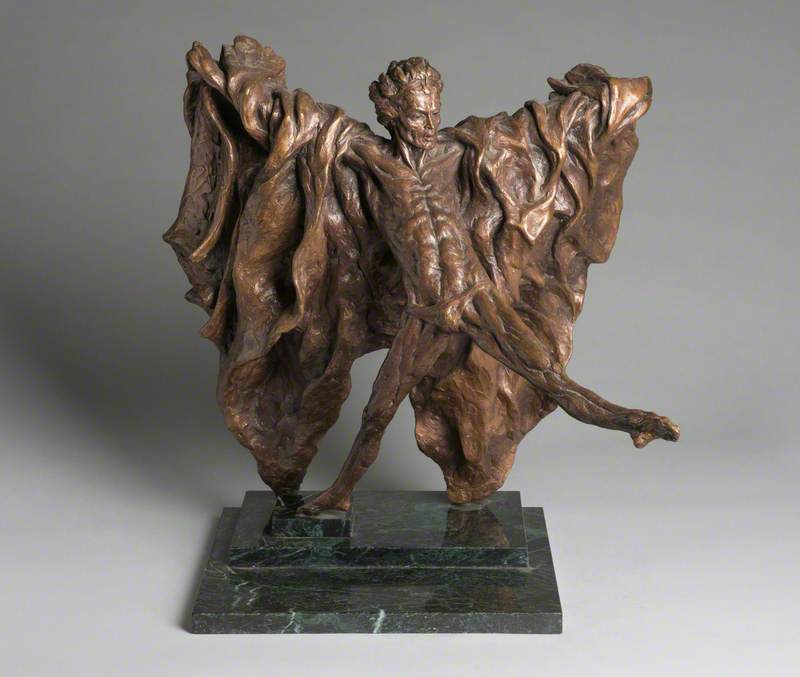What do our hands say about us? There is a whole pseudoscience around the analysis of hand shapes. A quick internet search reveals that if your index finger is shorter than your fourth finger you are likely to be charismatic and if you have square fingertips you are precise and dislike uncertainty (apparently!). Take a look at five sculptures of hands belonging to well known names, and see if you can spot any character clues!
George Eliot's Hand
It was a thing, in the nineteenth century, to get your ‘hands done’ – and this didn’t mean popping around to the local nail salon for a quick manicure! Sculptors were commissioned to capture hand portraits. This sculpture is thought to have been made shortly after George Eliot’s death (reflecting the Victorian tradition of memento mori). Does it tell us anything about the writer? Although at first glance the elegant hand, entwined with flowers, looks rather demure, with a longer and more careful look, a strong and capable hand reveals itself. According to the science of hand analysis, people with long thumbs - as George Eliot seems to have had - are self-willed and intelligent... maybe there is something in this after all!
unknown artist
White marble
H 10 x W 19 x D 33 cm
Nuneaton Museum and Art Gallery
Hand of Sir John Barbirolli
John Barbirolli was a British conductor and cellist. He is best remembered as conductor of the Hallé Orchestra in Manchester, which he helped save from disbandment in 1943 and conducted for the rest of his life. The 'Musical Times' noted, in describing his conducting style: ‘There was a fiery intensity and glowing warmth’ to the tone of orchestras lead by Barbirolli. This sculpture captures the thin and deeply lined hand of the conductor in action. Its strained rigid pose suggests tension, but also reflects the intensity and passion of a conductor devoted to getting the best from the musicians in his orchestras and bringing great music to life, for his audiences.
Byron Howard (1935–2019)
Resin
H 33 x W 50 x D 23 cm
Heritage Doncaster
Barbara Hepworth's Hand
Among the sculptures in this curation, this is unique as a hand self portrait. Cast from Hepworth’s own hand, in this image we see the original plaster cast and the bronze cast taken from it. It is strong-looking, and very capable of wielding a chisel. It is also posed rather rigidly, as if uncomfortable being still. The fourth finger is slightly bent towards the middle finger. The science of hand analysis calls the fourth finger the 'Apollo finger' - Apollo, being the god of creativity and expression. A bent fourth finger, apparently, is a typical feature of the hands of writers and artists. Another win!
Barbara Hepworth (1903–1975)
Bronze
H 6 x W 20 x D 11 cm
The Hepworth Wakefield
James Syme's Right Hand Holding a Scalpel
OK, so he may not be a household name, but James Syme was a celebrated surgeon in his day. (And this hand is too good to leave out of this curation!) Syme was a brilliant surgeon and was well known for operating on the inoperable - carrying out surgery that others would not attempt. Portraits often include object clues that tell us about the character or profession of the sitter. Syme’s hand holds a scalpel, the tool of his trade. Although carved from an original plaster cast taken from Syme's hand, the hand looks idealised - perhaps it's the unusual upright orientation, (pointing heavenwards!). It seems to be more a symbolic celebration of the awe-inspiring skill of the profession, rather than a hand portrait.
John Brown (active c.1876) (possibly)
Marble
H 23.5 x W 9 x D 8 cm
The Royal College of Surgeons of Edinburgh
Hand and Wrist of George Bernard Shaw (1856–1950)
It is hard to believe that this beautiful, lifelike hand is carved from marble. The texture of the skin, with its tiny lines and wrinkles around the knuckles has been breathtakingly rendered. The hand rests lightly on the rough surface it is set on. Does it tell us anything about the character of George Bernard Shaw? According to hand analysis, if the fourth finger and index finger are the same length, a person is balanced and something of a peacemaker. Shaw was a pacifist, and a large proportion of his writing addresses war and society's love-hate relationship with it. But he was also a controversial and provocative figure... OK let’s just enjoy this beautiful sculpture and forget trying to understand his character from it!
Zsigmond Kisfaludi Strobl (1884–1975)
Marble
H 16.5 x W 22.9 cm
National Trust, Shaw's Corner

